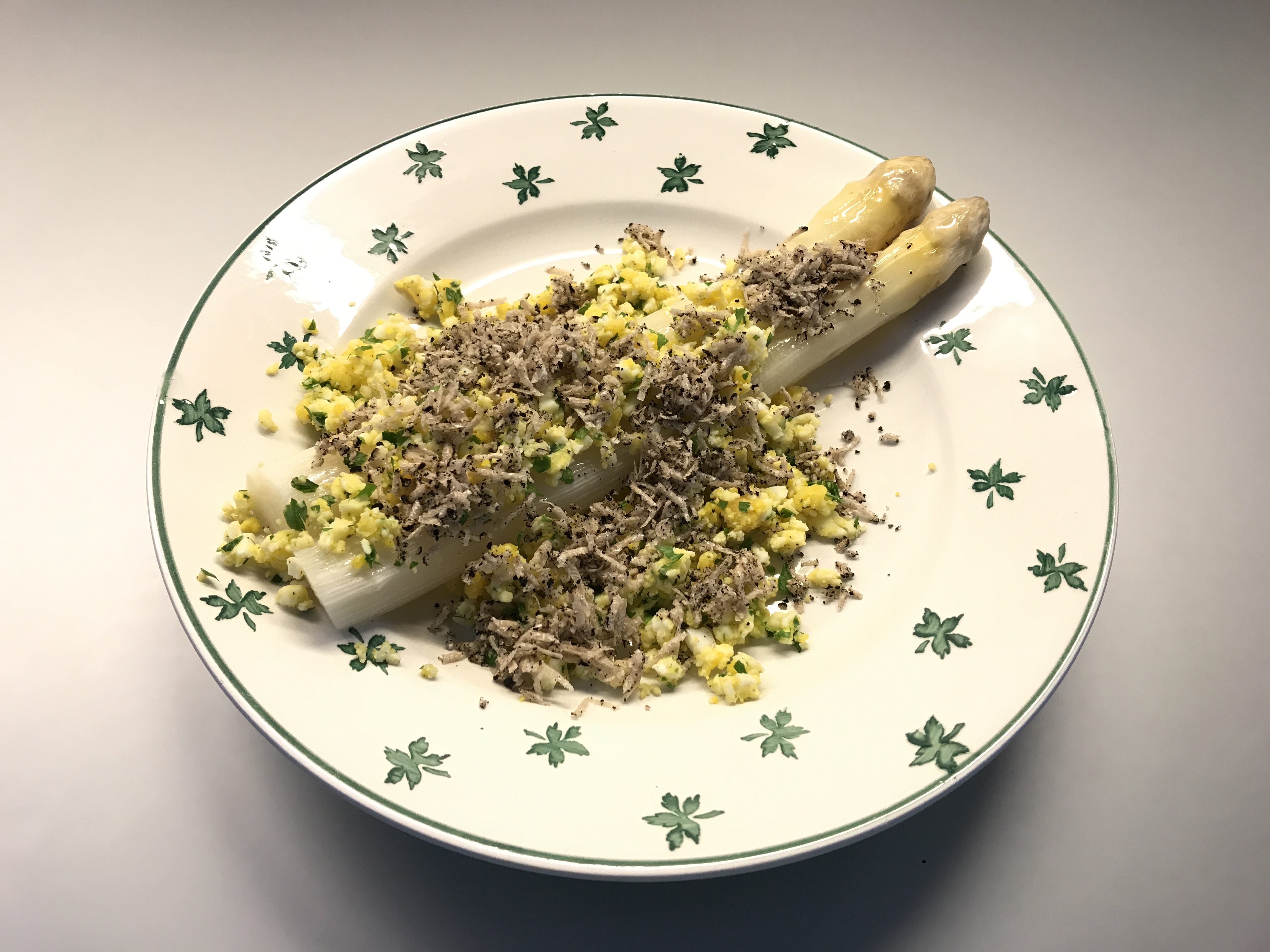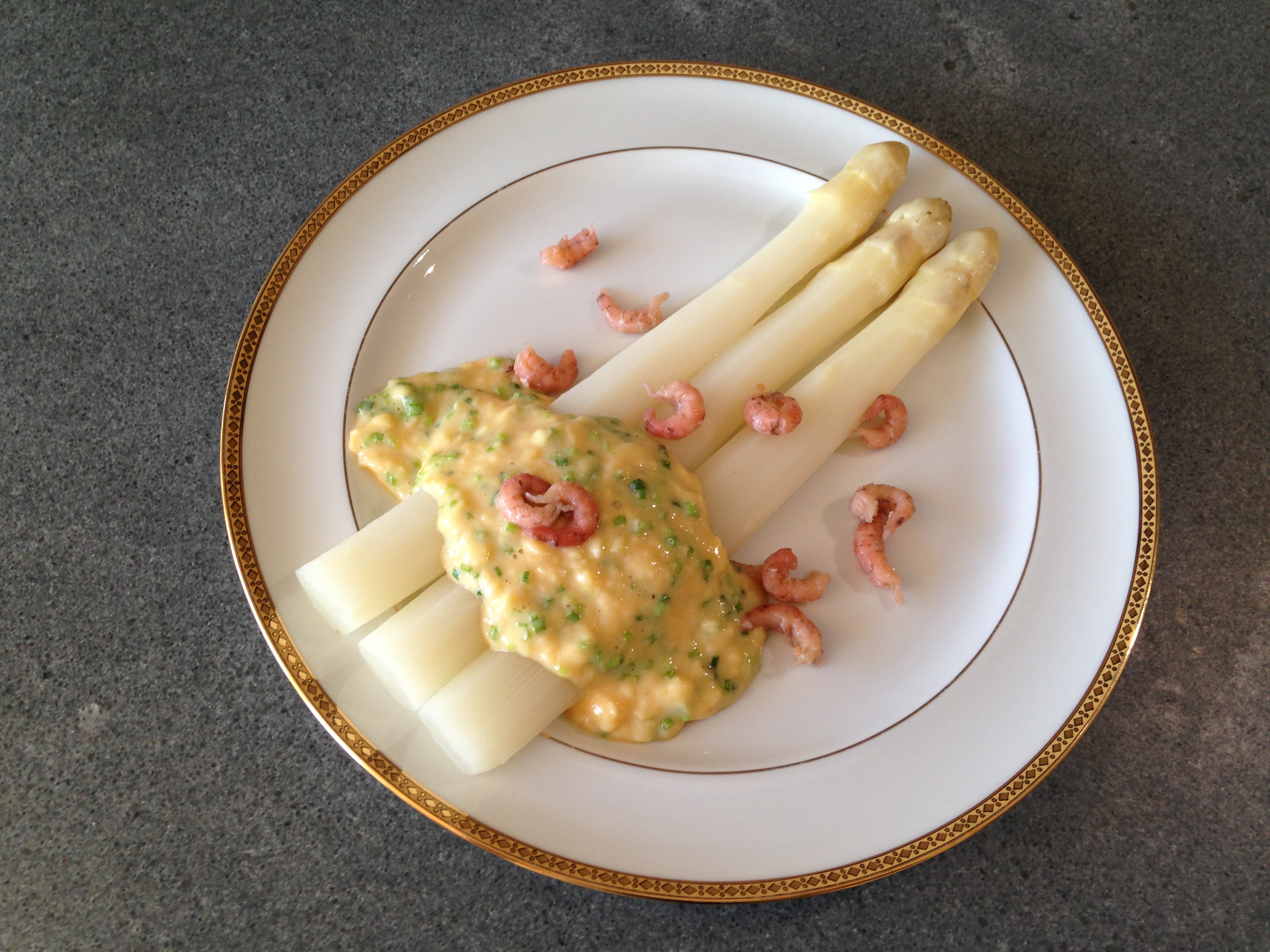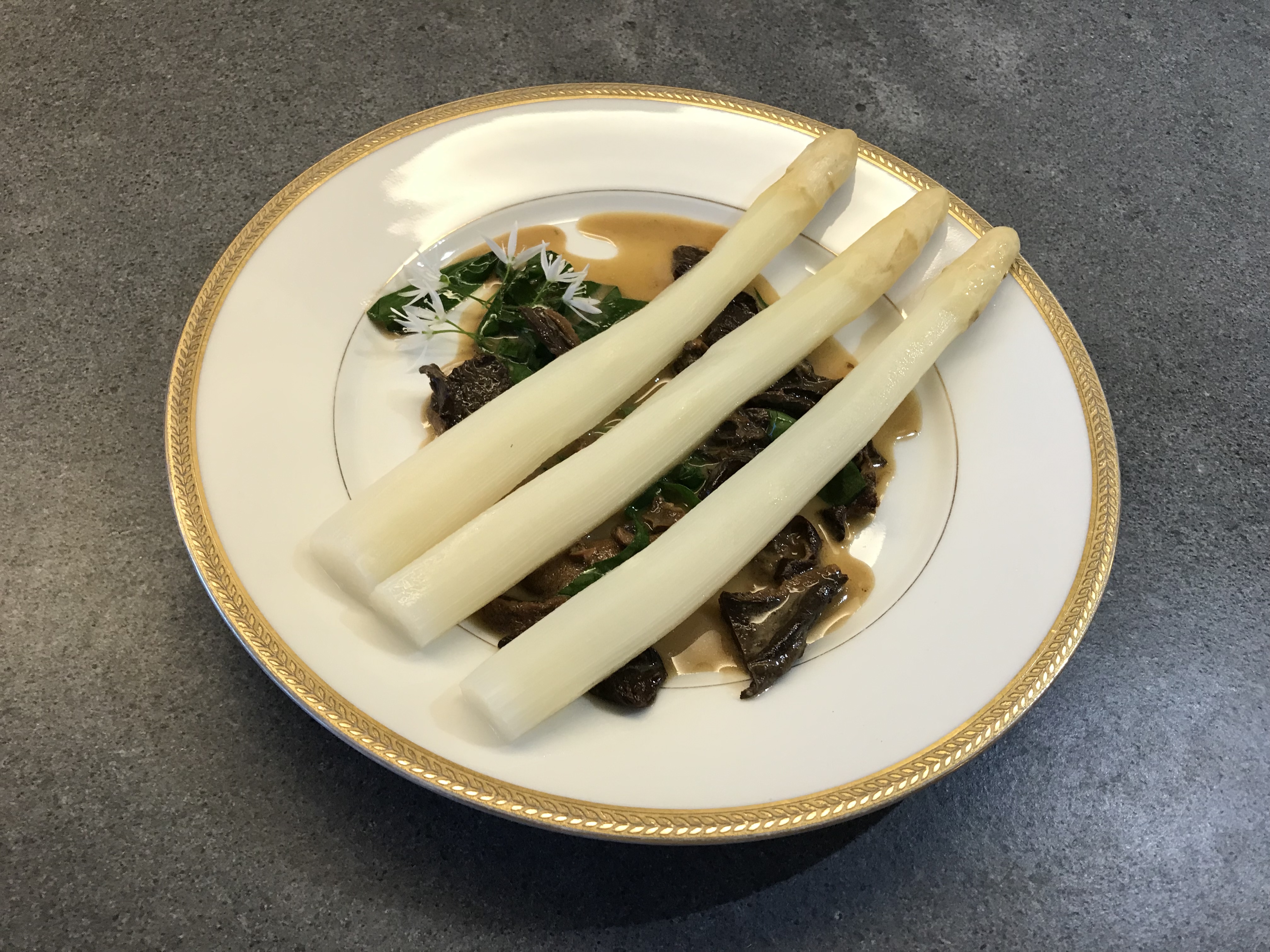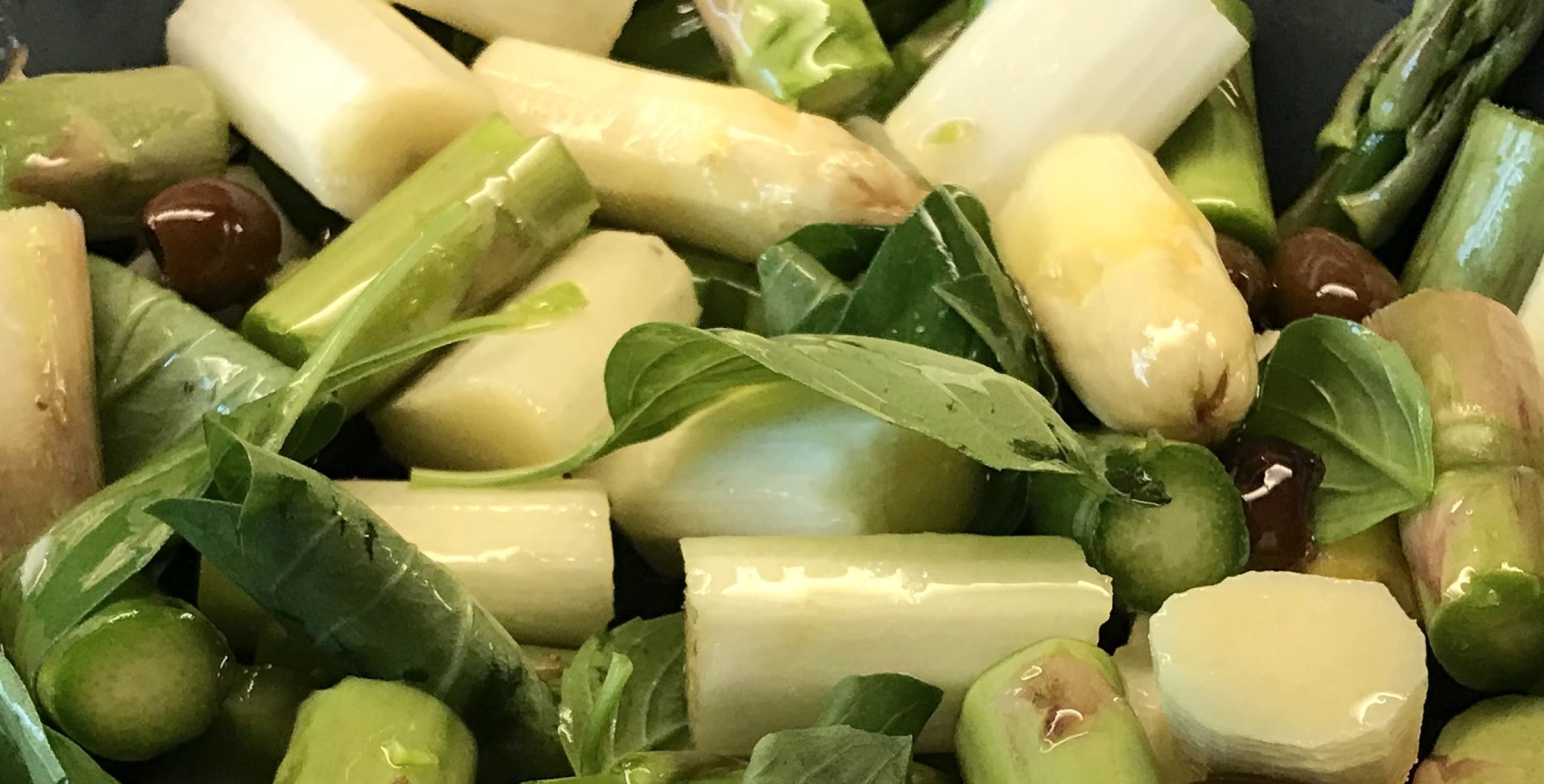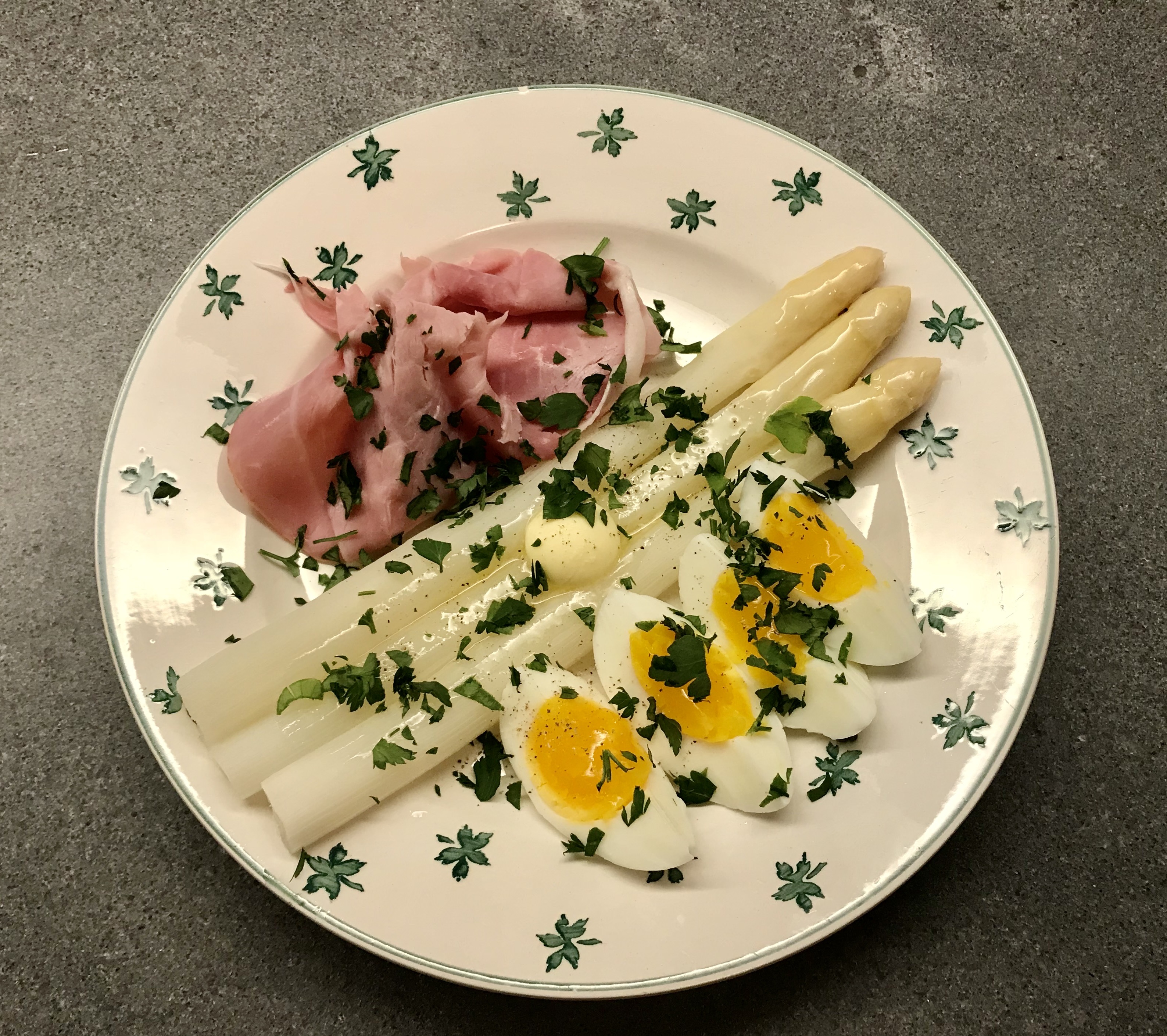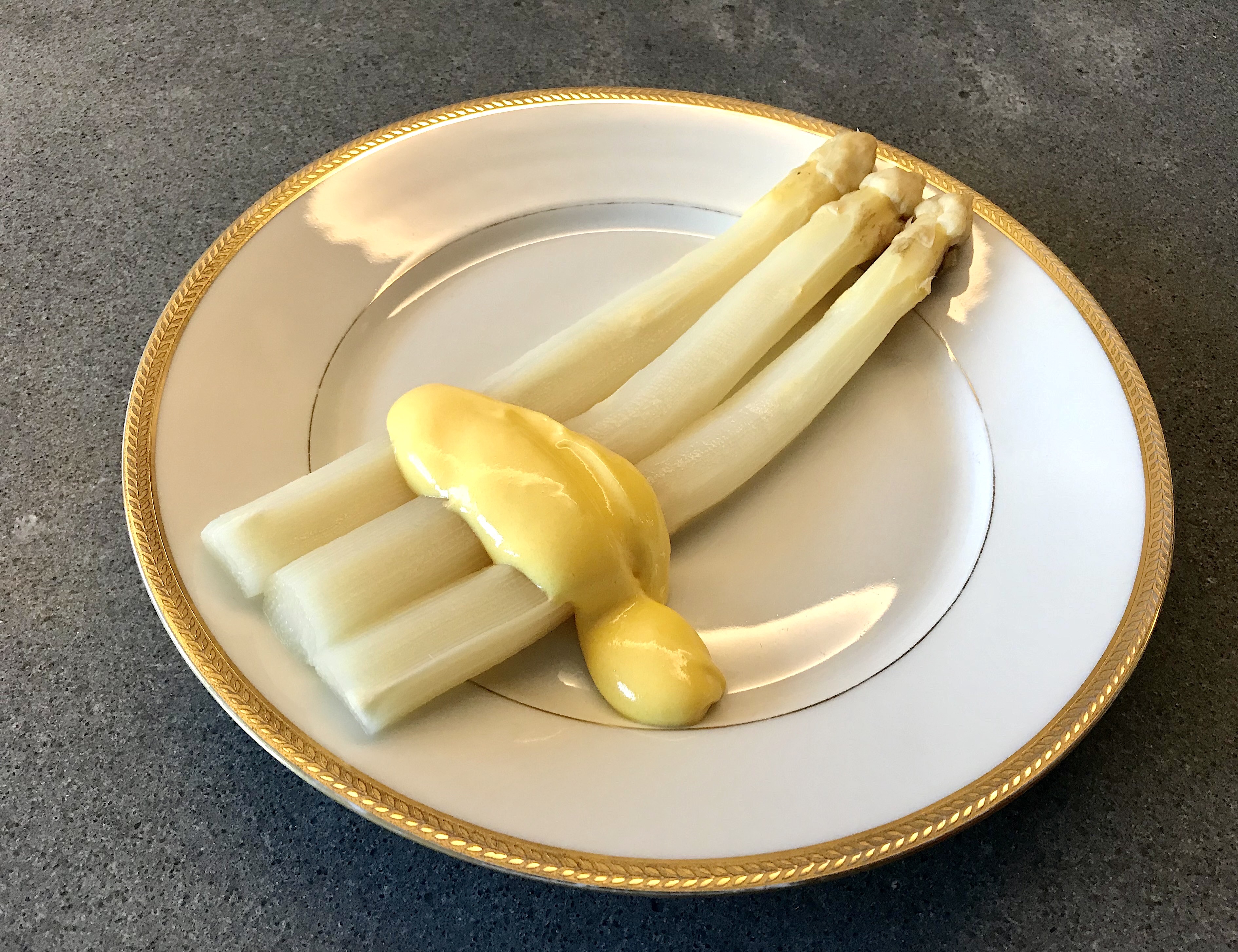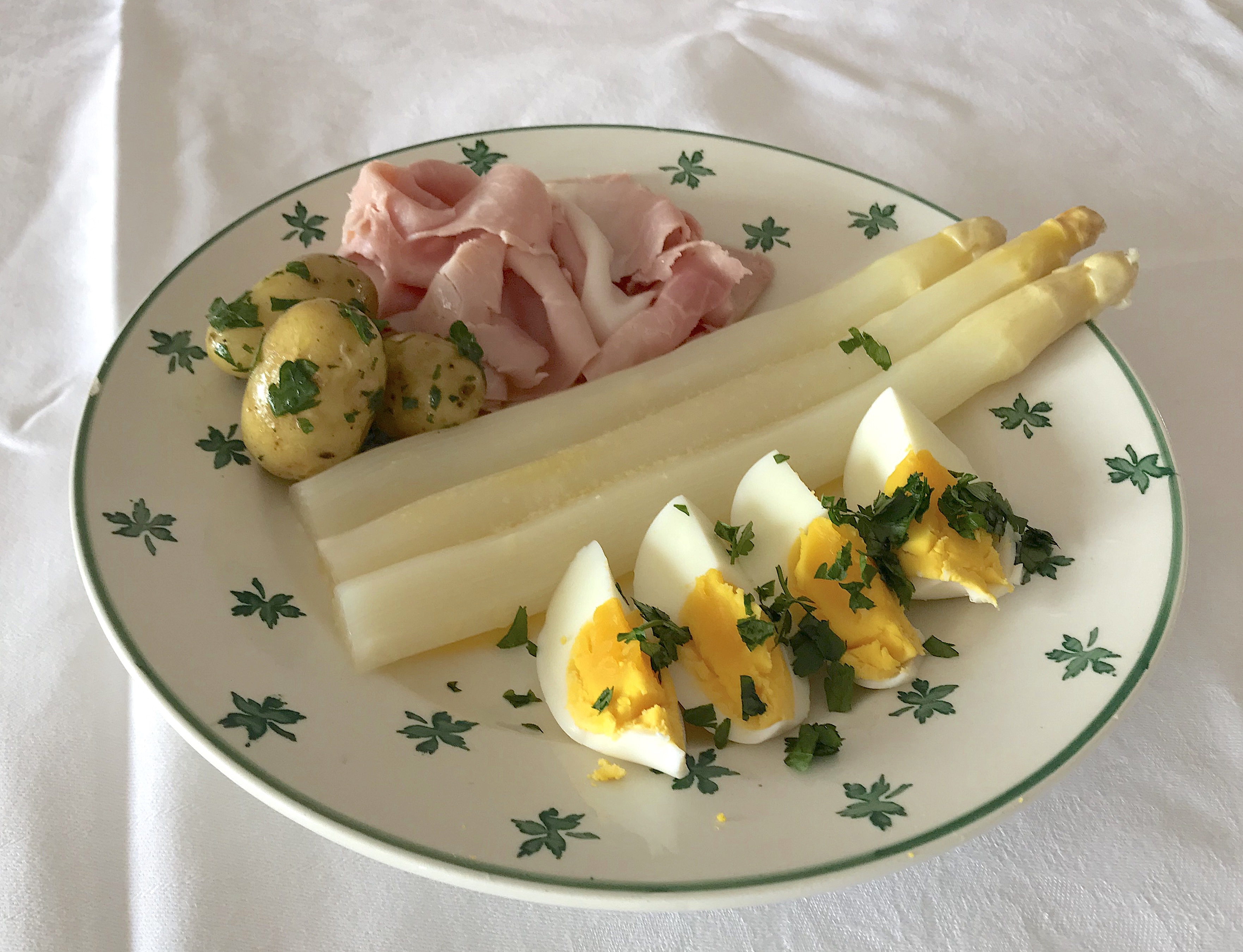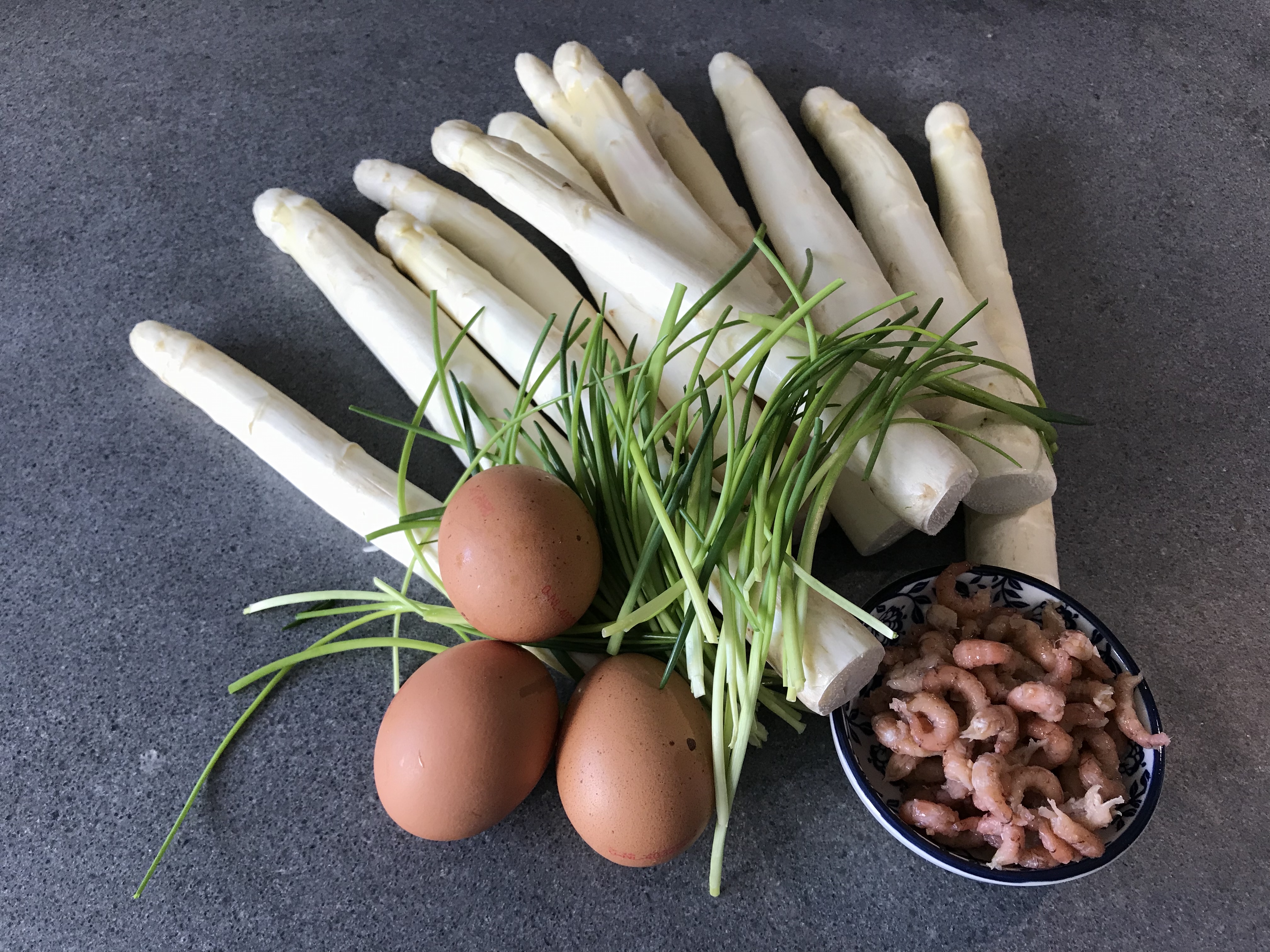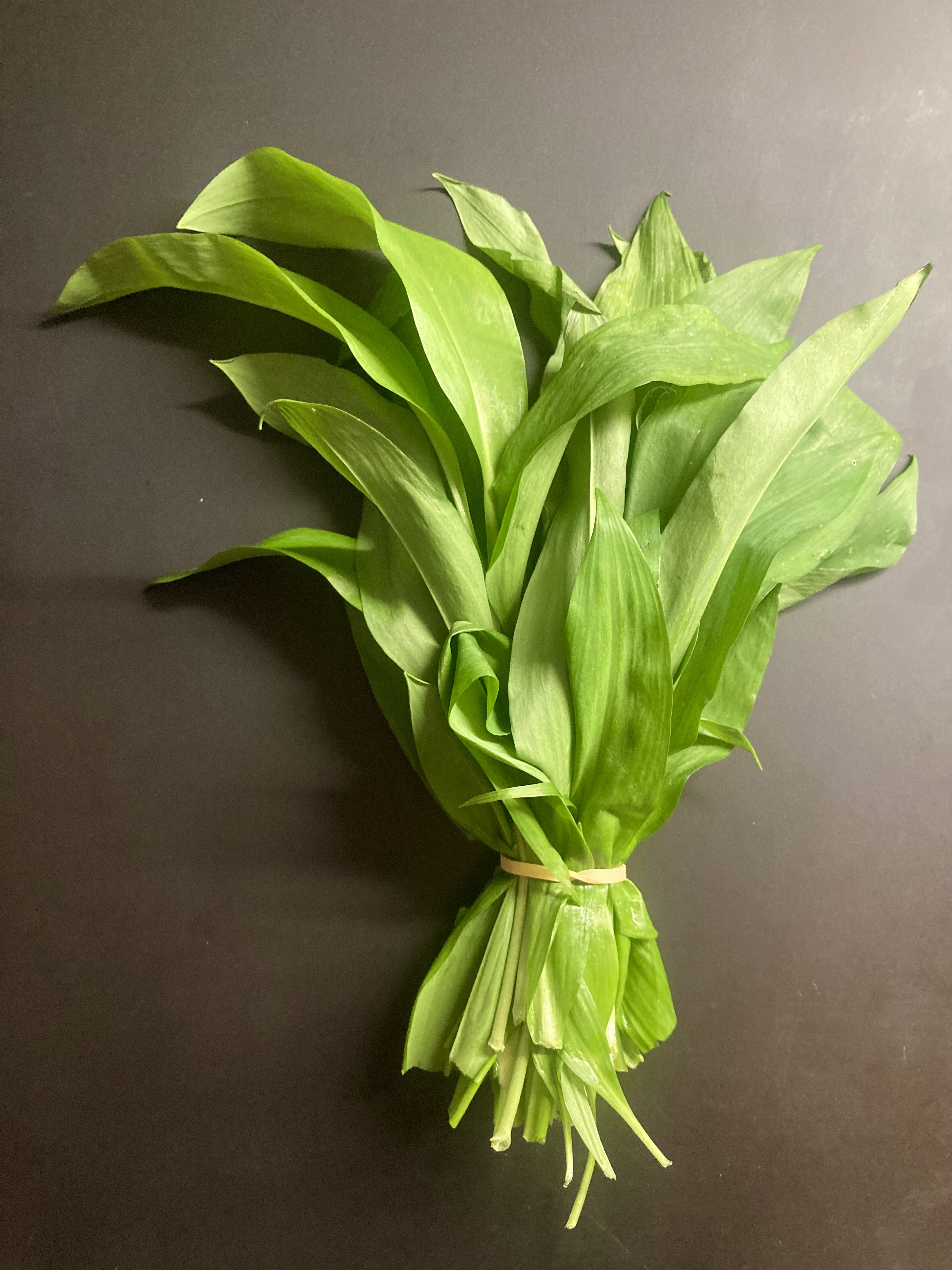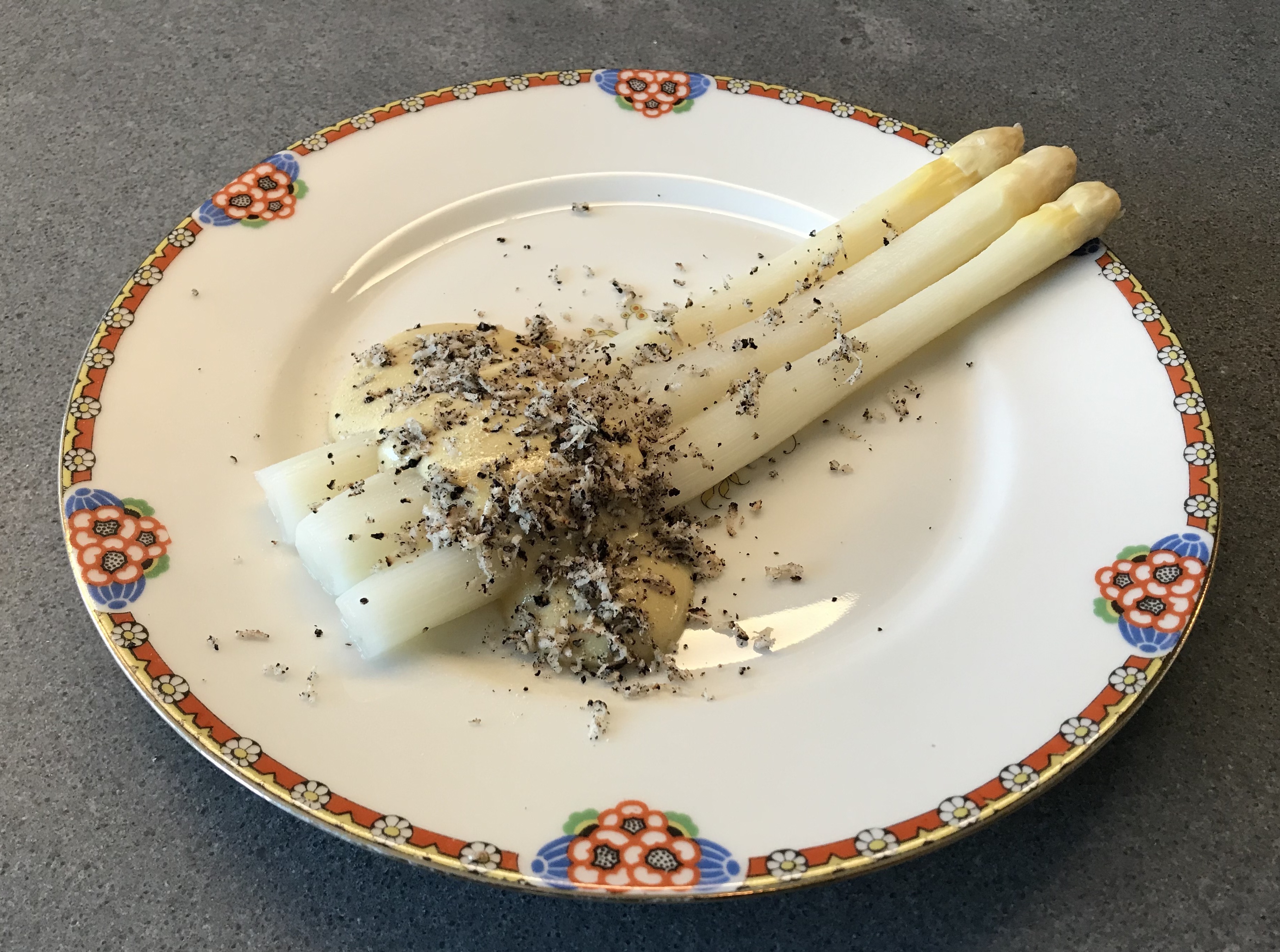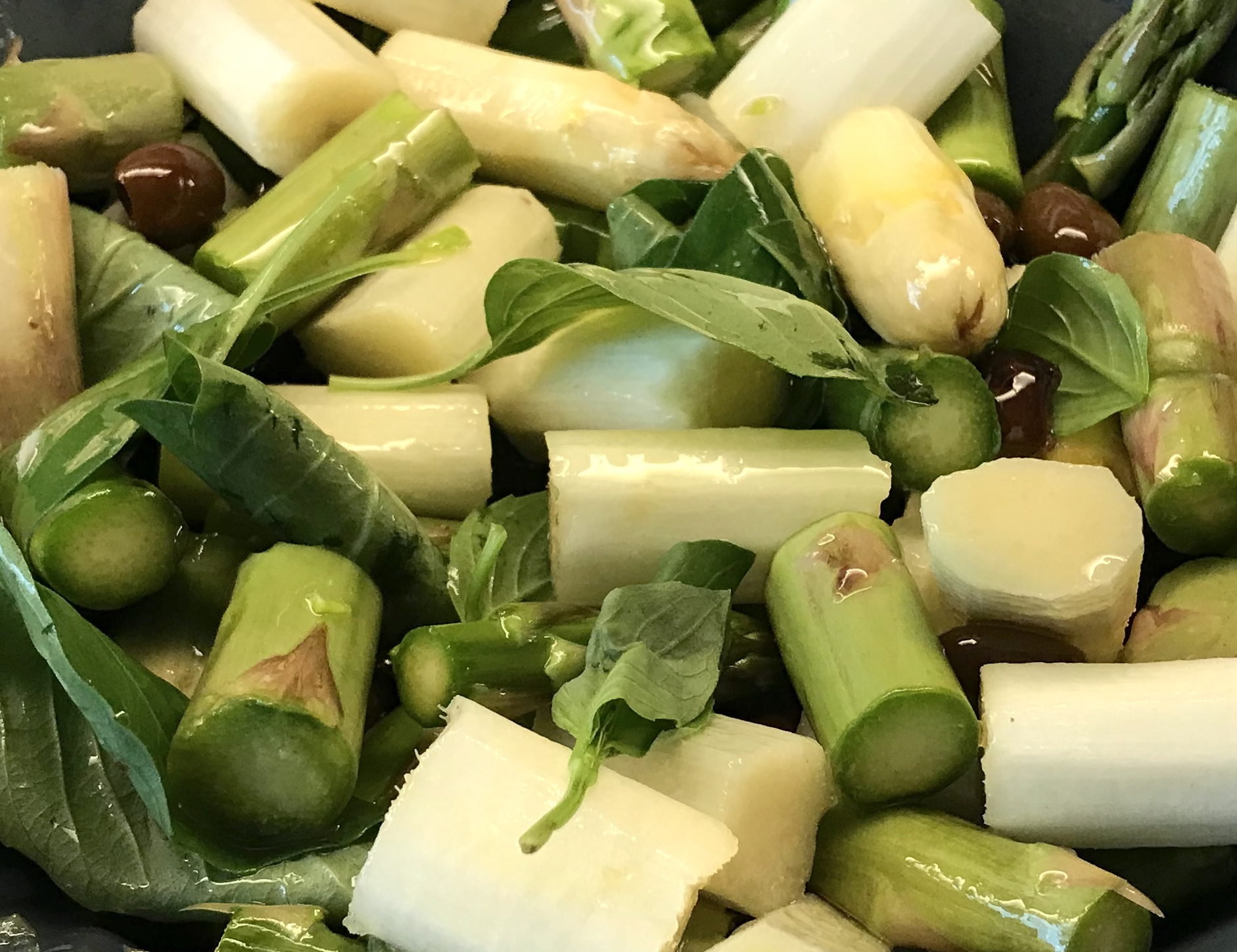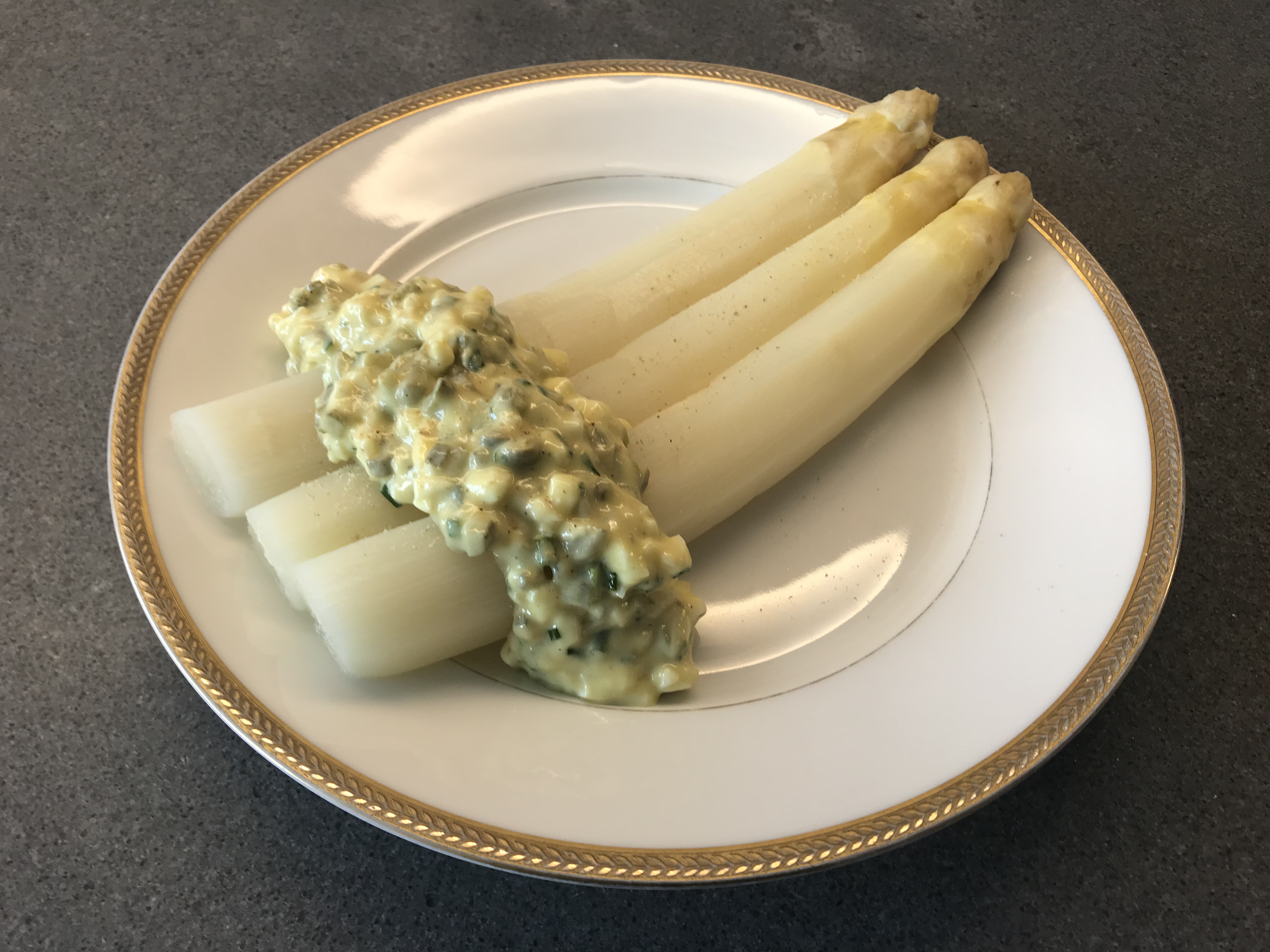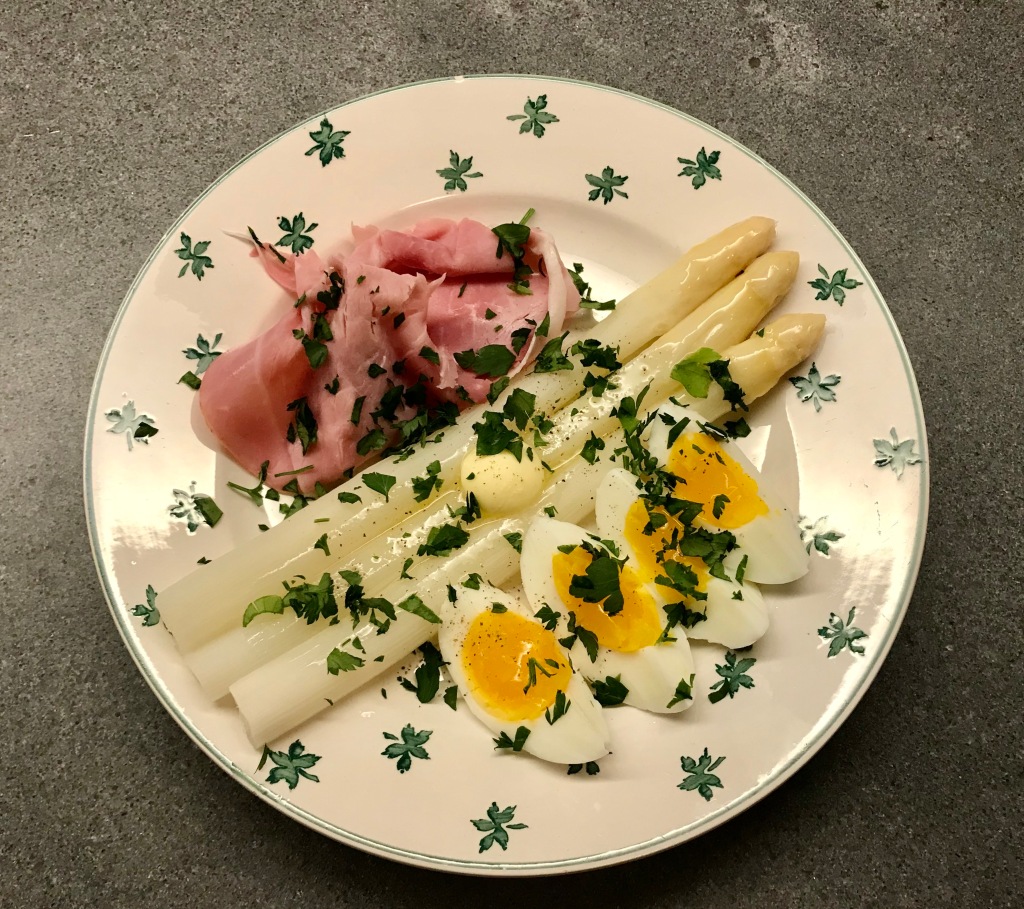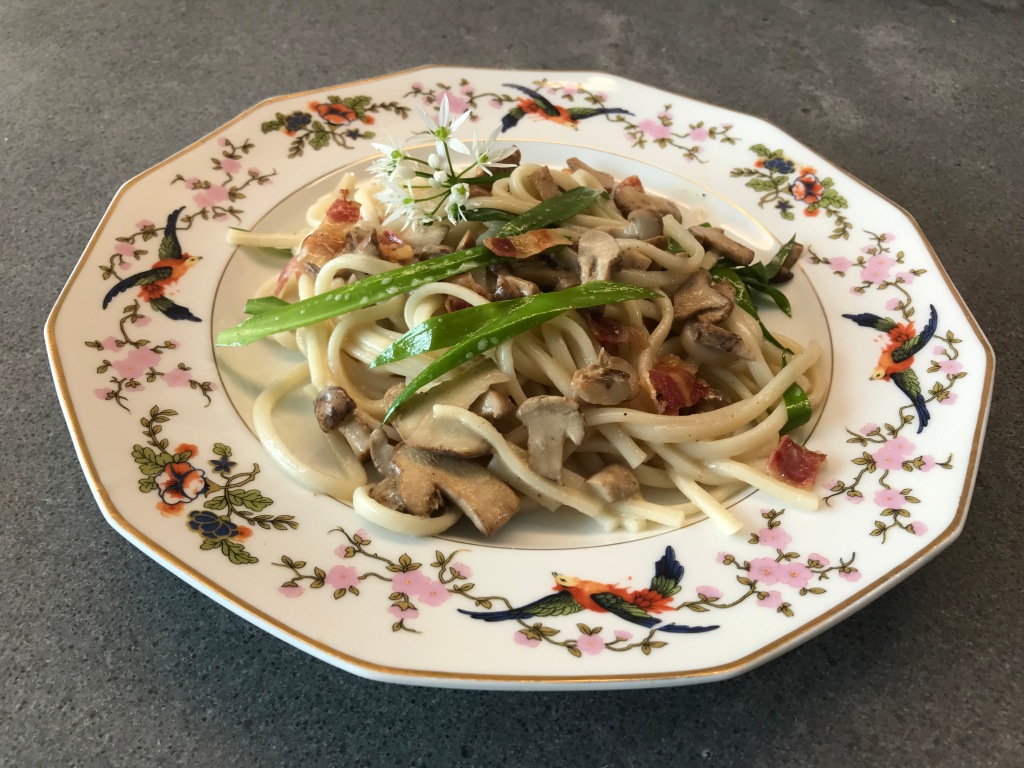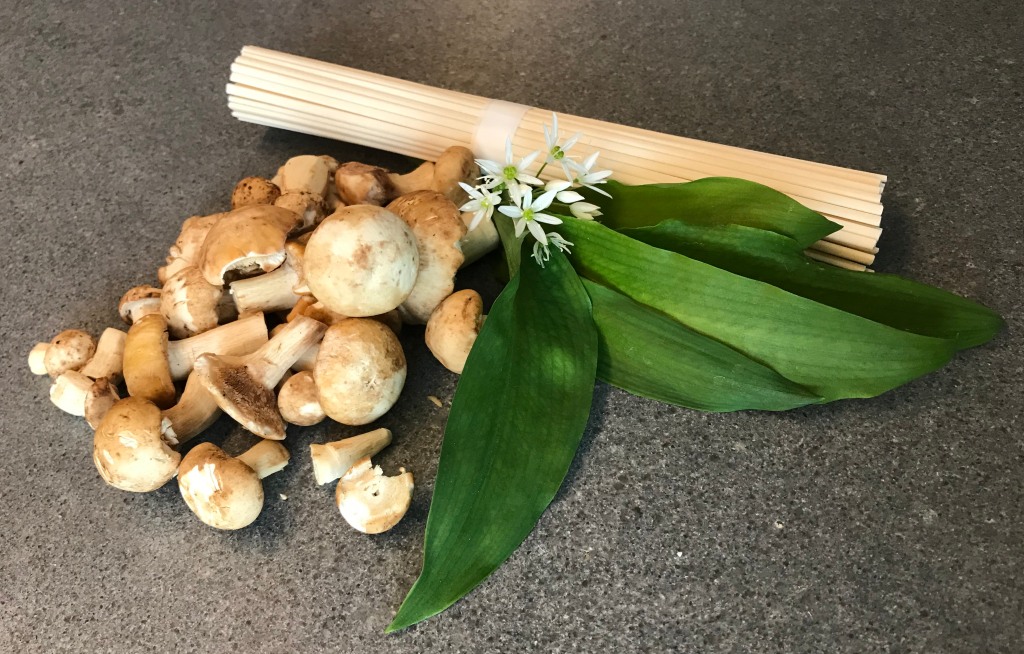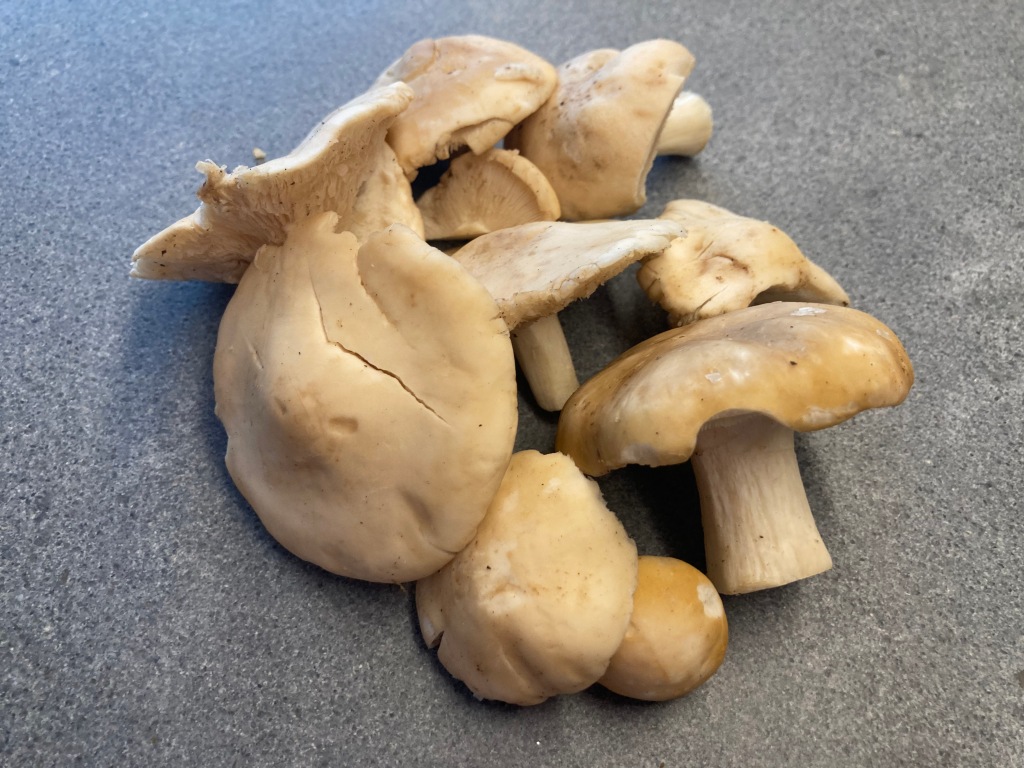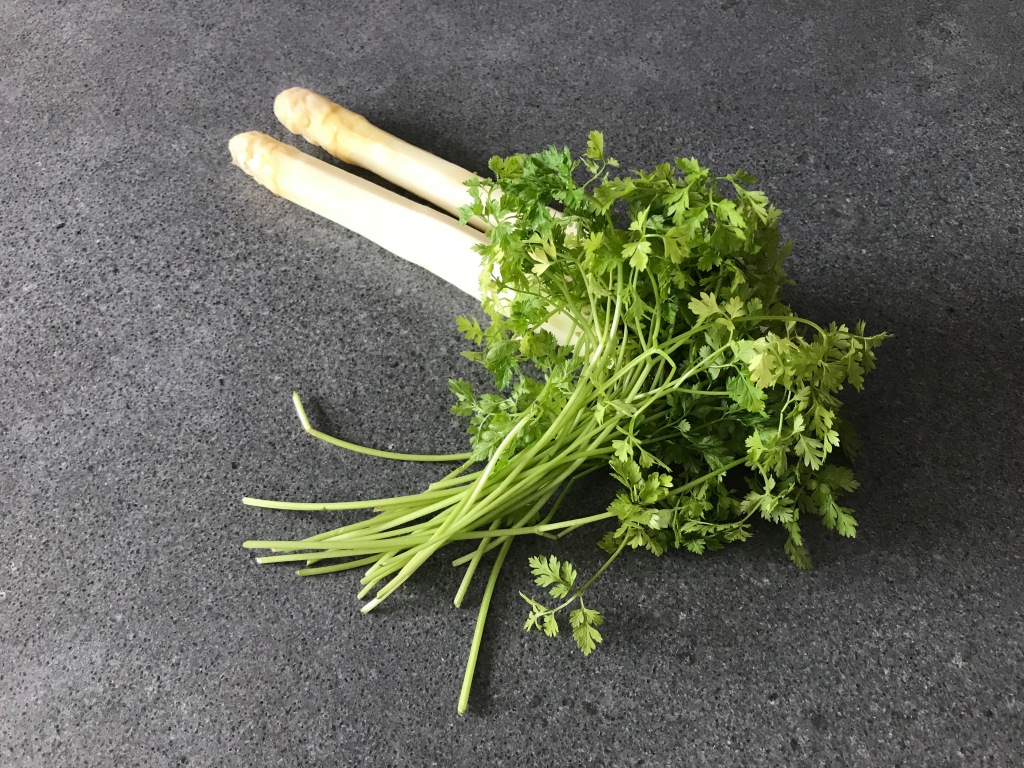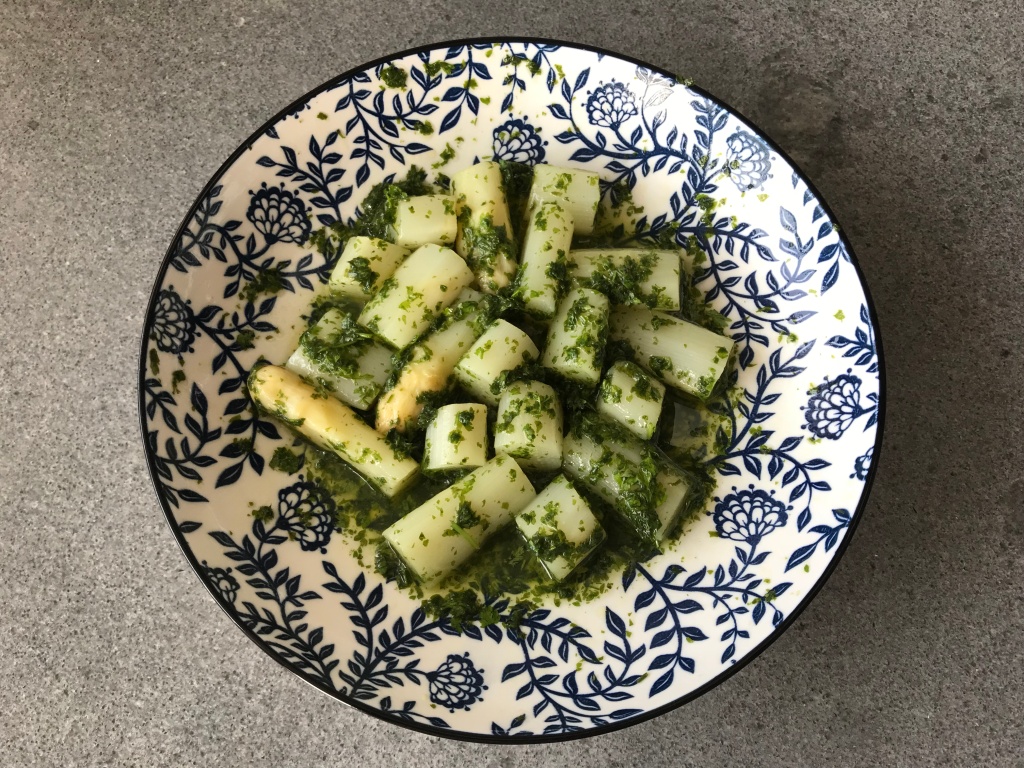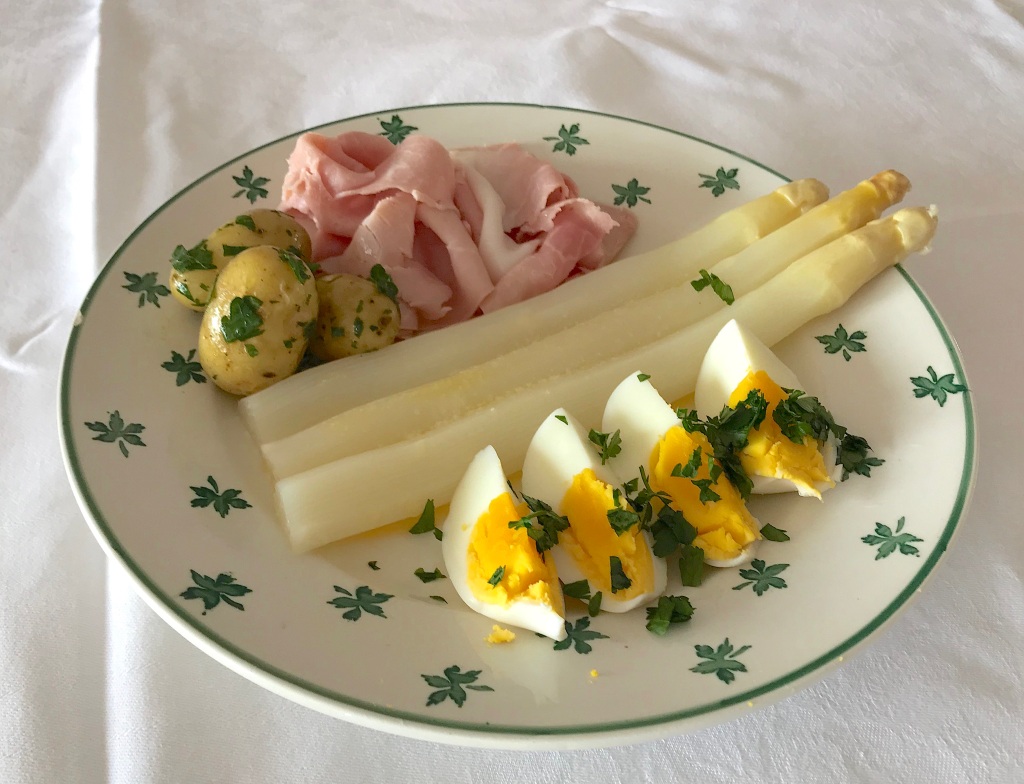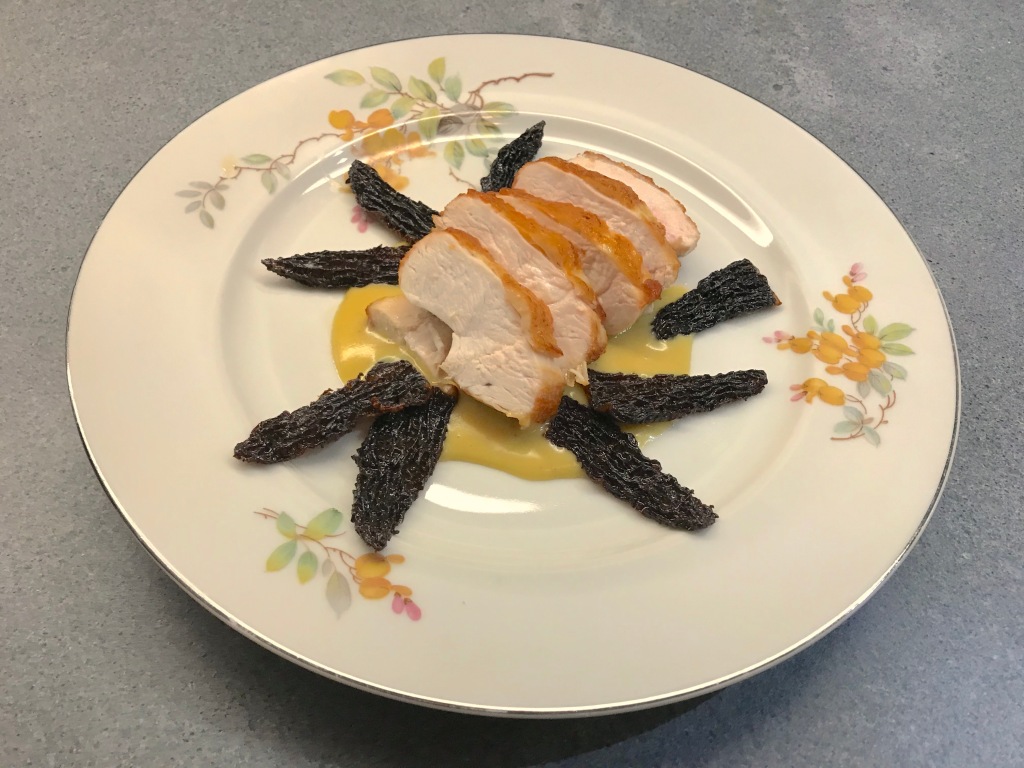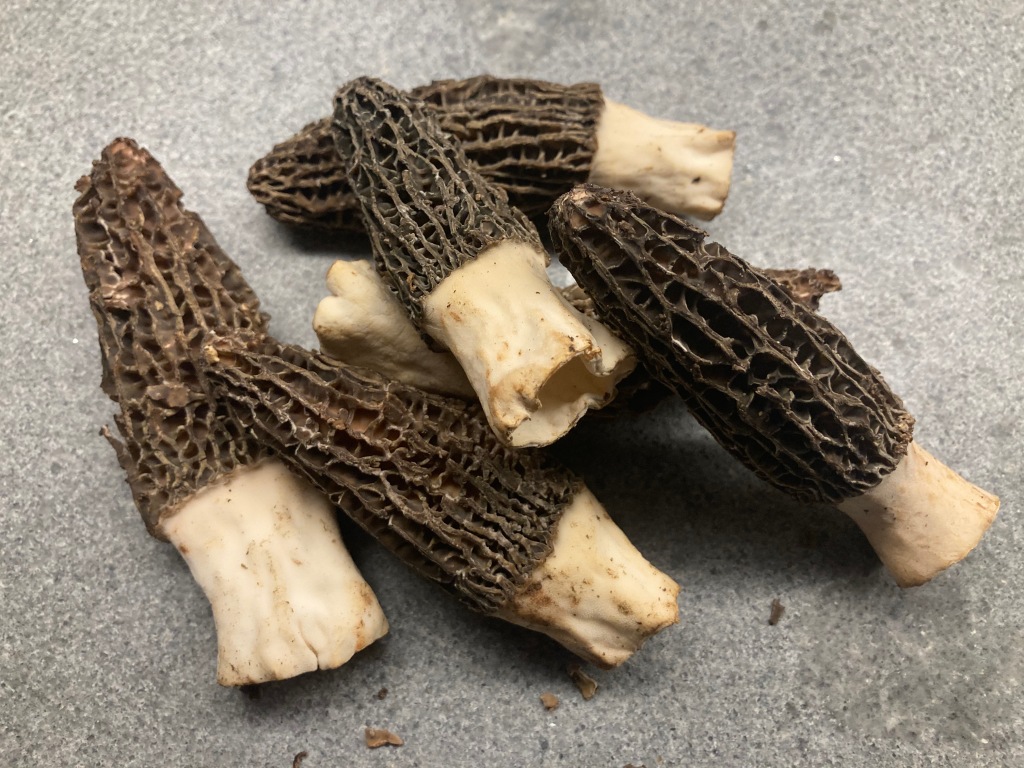From February to June, you can find Wild Garlic (Ramson(s) Daslook, Bear Leek, Ail des Ours, Bärlauch). It’s a shade-loving plant with beautiful white flowers that you can forage for in the woods or grow in your garden or on your balcony. If you decide to pick wild garlic, be careful not to pick its lookalike: the poisonous Lily of the Valley. Check if it’s wild garlic by grinding your fingers on the leaf. If you smell garlic and onion, you should be fine. If in doubt, don’t use it.
Wild garlic is much loved in Germany, Austria, France and other parts of Europe. The leaves and the flowers are edible (and so are the bulbs, but we haven’t tried these yet). Some sources mention that you should only eat the leaves before the plant starts flowering. But then you can’t combine the leaves and the tasty flowers in your dish, so we suggest ignoring that idea. The flowers are a touch sweet because of the honey. We suggest tasting the leaves and the flowers well before using. Adjust the quantities accordingly.
The taste is a bit like a combination of onion and garlic, but much greener, longer lasting and with a touch of bitterness at the end. Works very well as a pesto, but equally nice with potatoes or gnocchi. You can also add the leaves and the flowers to a salad, but we feel the taste benefits from some warmth. Be very careful when cooking wild garlic because the flavour deteriorates quickly and at its best becomes unpleasant and onion-like. However, it’s possible to prepare a very tasty wild garlic soup.
We use wild garlic in four dishes. One is Farfalle with a wild garlic-based pesto, the second is a soup and the third is with white asparagus with morels and is published in the excellent book Mushrooms by Johnny Acton and Nick Sandler.
The cheese we use on our potato-wild-garlic-mash is Vacherin Fribourgeois. It originates from the region around the Swiss city Fribourg. It’s a semi-hard, creamy cheese made with raw cow milk. It matures for some 10 weeks in a damp cellar. Its taste is aromatic, floral, full-bodied and lasting, with a touch of sweetness, bitterness and umami. Ideal to combine with gnocchi or an omelette. Unfortunately, it’s not a widely available cheese. We bought it at one of our favourite cheese shops. You could replace it with Gruyère or perhaps Emmenthaler.
We combined out potato-wild-garlic-mash with a nice steak, but you could also serve it with an excellent organic sausage, perhaps one with sage?
Wine Pairing
The combination of the rich and flavourful mash and the red meat suggests a red wine with sufficient acidity, structure and tannins. We decided to enjoy a glass of Le Jardin de Queyron Pindefleurs 2018, Saint-Emilion, made from 78% merlot, 20% cabernet franc and 2% Cabernet Sauvignon grapes. It’s an elegant wine with aromas of dark fruit, liquorice and toast. The wine was a perfect balance with the various flavours in the dish.
What You Need
- Floury (Starchy) Potatoes
- Milk or Cream
- Butter
- Pinch of Salt
- Cheese
- Wild Garlic
What You Do
Bring a pan of water with a pinch of salt to the boil. Add the potatoes and cook until tender. Transfer to a colander and drain. Return to the pan (on low heat) and allow to dry. Mash the potatoes using a fork or a potato masher. Add hot milk, or cream and (melted) butter. A few minutes before you serve the mash, coarsely chop the leaves and grate the cheese. Quickly add the cheese, mix, taste, adjust, perhaps some more, perhaps some black pepper and then add the chopped leaves. A few seconds later the mash is ready.
PS
Watch this video (in English) about a communal garden in a park in Amsterdam, featuring Lynn and her beloved daslook.
